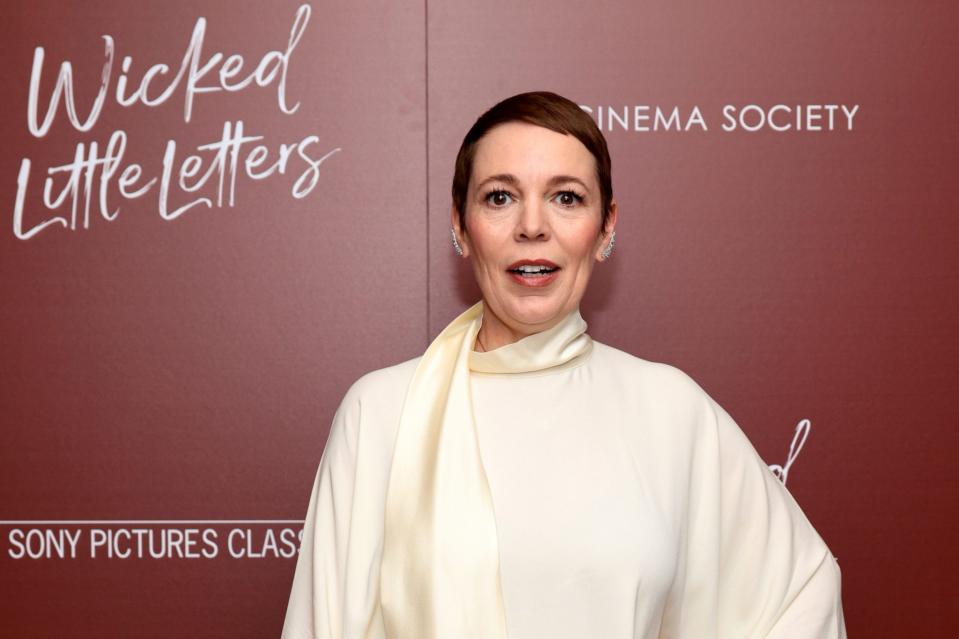Oscar winner Olivia Colman said she’d make ‘a f— of a lot more’ if she were a man—and she’s spot-on. Here’s the latest on pay disparity between men and women

Olivia Colman is known for her hilarious non sequiturs. When accepting the Best Actress Academy Award for her role in The Favourite in 2019, she shouted out to her kids who she hoped were at home watching, because “this is not gonna happen again.” But she was decidedly less jovial during an appearance on CNN’s The Amanpour Hour over the weekend.
Colman, 50, spoke with journalist Christine Amanpour to promote her new film, Wicked Little Letters. But after a rundown of the movie—alongside its director, Thea Sharrock—the Brit quickly pivoted to her frustrations with the Hollywood machine.
“Don’t get me started on the pay disparity,” the actress, who played Queen Elizabeth on Netflix’s The Crown, said. “Male actors get paid more because they used to say they draw in the audiences, but actually that hasn’t been true for decades. But they still like to use that as a reason to not pay women as much as their male counterparts, particularly in our industry.”
Amanpour pried further. “Do you have a pay disparity?” she asked Colman. “I mean, you’re an Oscar-winning actress, Olivia.”
Colman was undeterred. “I’m very aware that if I was Oliver Colman, I would be earning a f—k of a lot more than I am.”
“Really?” Amanpour asked.
“Absolutely, yes,” she responded, adding that she knows of one particular pay disparity in her career that was “a 12,000% difference.”
Colman is dead-on: Men outearn women on pretty much every set in Hollywood. A bombshell 2018 report from Forbes found that, at the time, the 10 highest-paid actresses earned less than 30 cents per every dollar earned by their male counterparts. Indeed, Forbes found, those top actresses altogether earned a combined $186 million against the $748.5 million the top 10 men earned.
Despite the inarguable star power of women actors, Hollywood remains a boys' club, at least in terms of leadership. A recent study carried out at the University of Southern California found just 30 of 2023’s 100 top-grossing movies starred women—the same percentage as in 2010.
Unsurprisingly—and dispiritingly—those same jarring pay gaps and leadership gaps persist across sectors. Just 10.4% of the Fortune 500 companies are helmed by female CEOs. Today, women workers, on average, earn 83 cents on the dollar compared to their male counterparts, per compensation data provider Payscale’s 2024 Gender Pay Gap Report. Worse still, that pay gap widens as women ascend the corporate ladder. Female managers and supervisors earn 83 cents on the dollar, Payscale found, but female executives’ share drops to 72 cents.
A lot of the time, that gap is due to women’s low initial salaries when they launched their career, often borne by their hesitance to negotiate, Ruth Thomas, a pay equity strategist at Payscale, told Fortune last month. “And they continue to carry that with them as they go through their career.”
While the onus is surely not on any one woman to single-handedly upend a generations-long gap between work output and fair compensation, there are some ways of evening the playing field. Often, especially in tight labor markets, the best way for women to position themselves for sizable pay increases is to job-hop. Unfortunately again, women tend to be significantly more company-loyal than men.
“Employer loyalty backfires on women, and actually exacerbates the pay gap,” Thomas told Fortune’s Emma Burleigh. “So women who are potentially more mobile, more willing to consider other job opportunities, or who have moved and are ready to move again during the Great Resignation, have probably benefited from the wage inflation that occurred during that period.”
The bottom line: Jumping from job to job is the best way to ensure steady raises. It’s what Olivia Colman would want you to do.
This story was originally featured on Fortune.com
